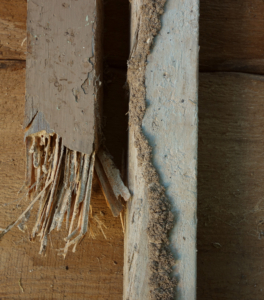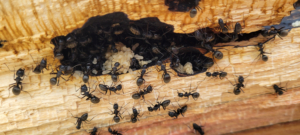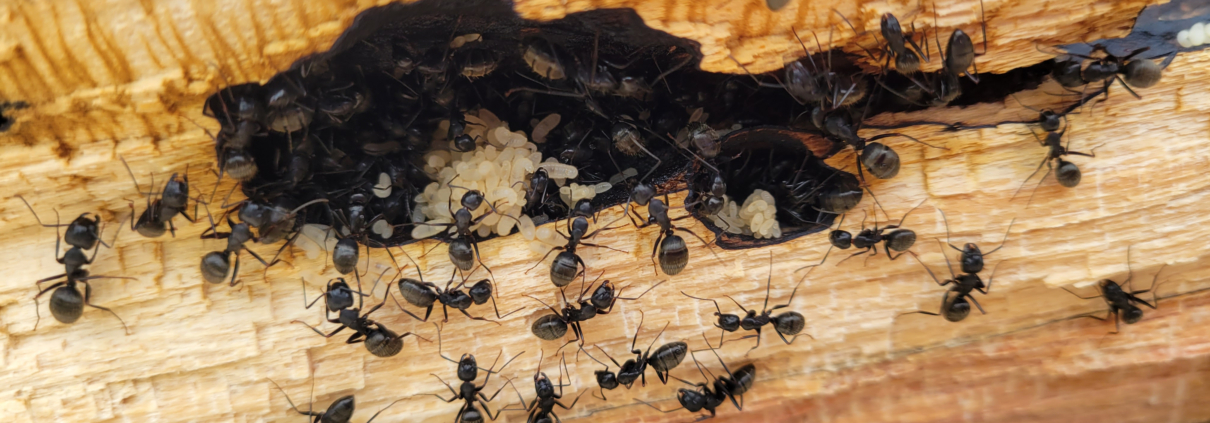Termite & WDO Inspections
What is a WDO Inspection?
WDO stands for wood destroying organisms that can ruin wooden structures and furniture. Wood-destroying organisms include subterranean and drywood termites, powderpost bugs, wood borer bugs, carpenter ants, and fungi.
The basement, crawl space, attic, or yard of your house can be the breeding ground of WDOs. A WDO inspection is a dedicated assessment process to find out infestations of the wood-destroying organisms, and the inspection process also includes discovering areas prone to such infestations.
Subterranean Termites
Subterranean termites are commonly found underground, and they are classified into three groups. Reproductive males and females have wings, and they are called swarmers. The other two groups are workers and soldiers. Among these three categories, workers move freely above the ground.
Spring is the breeding season of subterranean termites, and if there is an infestation in your home, you may notice the swarmers around your home. Further, you can find mud tubes formed on floor joists, foundation walls, and other places if subterranean termites have already begun to attack your home. These mud tubes are a kind of transportation tunnel for termites to travel from their underground colony to the wooden structure. A termite attack can make a wooden structure hollow from the inside and destroy it over time.
We usually assess the wooden structures near the foundation of your house to detect termite infestation. Wooden structures also become easy targets of termites when placed near the soil. Further, during a WDO inspection we will look for mud tube structures on walls or wooden structures to identify termite problems.

Powderpost Bugs
Powderpost bugs and beetles literally reduce wooden structures to powder or dust. The larvae of these insects create tunnels within the wooden structure and feed on wood. If you have old wooden furniture or antique wooden pieces in your home, the chances of powderpost bug damage can be higher. Further, you will notice small and round holes on the surface of a wooden structure if it has been infested by powderpost bugs. Also, a powder-like formation will come out of those small holes if the affected structure faces any external shock. If the wooden structure gets broken or cut, you will discover flour-like powder or wood dust created by the larvae.
Powderpost bugs can be divided into two groups, lyctid, and anobiid. Lyctid bugs tend to attack structures engineered from hardwood and bamboo. We often see lyctic bug infestations in new properties or structures that have been just made from hardwood. On the other hand, Anobiid bugs can infest structures made from softwood and hardwood.
Carpenter Ants
You must ensure that the wooden structures of your home are not subject to water damage if you want to avoid an infestation of carpenter ants. Moist wood is the ideal place for the infestation of carpenter ants, found in black and red colors.
You may notice carpenter ants in parts of your house, facing heavy moisture on a regular basis. These ants build nests around poorly sealed frames of windows and doors and around chimneys, sinks, and bathtubs. These wood-destroying organisms also reside in hollow spaces and porch columns.
These insects do not eat wood. Instead, they chew the wood fibers and create a hollow space inside a wooden structure for breeding. You will hardly find any external sign of damage if there is an infestation of carpenter ants in any of the wooden structures of your house. Nevertheless, you can try giving your wooden furniture a tap around the baseboard with a screwdriver’s blunt end. If there is a hollow sound, you can suspect infestation or damage.

Is a WDO Inspection Necessary?
A WDO inspection will help to detect and avoid the unpleasant consequence of termite and other wood-destroying infestations. These organisms often make the wooden structure a property hollow from the inside which can impair the structural integrity of a home. In other words, as a consequence of a WDO attack, you may suddenly encounter accidents like floorboard cracks, the collapse of beams, etc. In addition, these organisms can expose irrigation pipes or electrical wires, increasing the chances of injury to the residents and neighbors. To avoid this problem, a WDO inspection is necessary.




